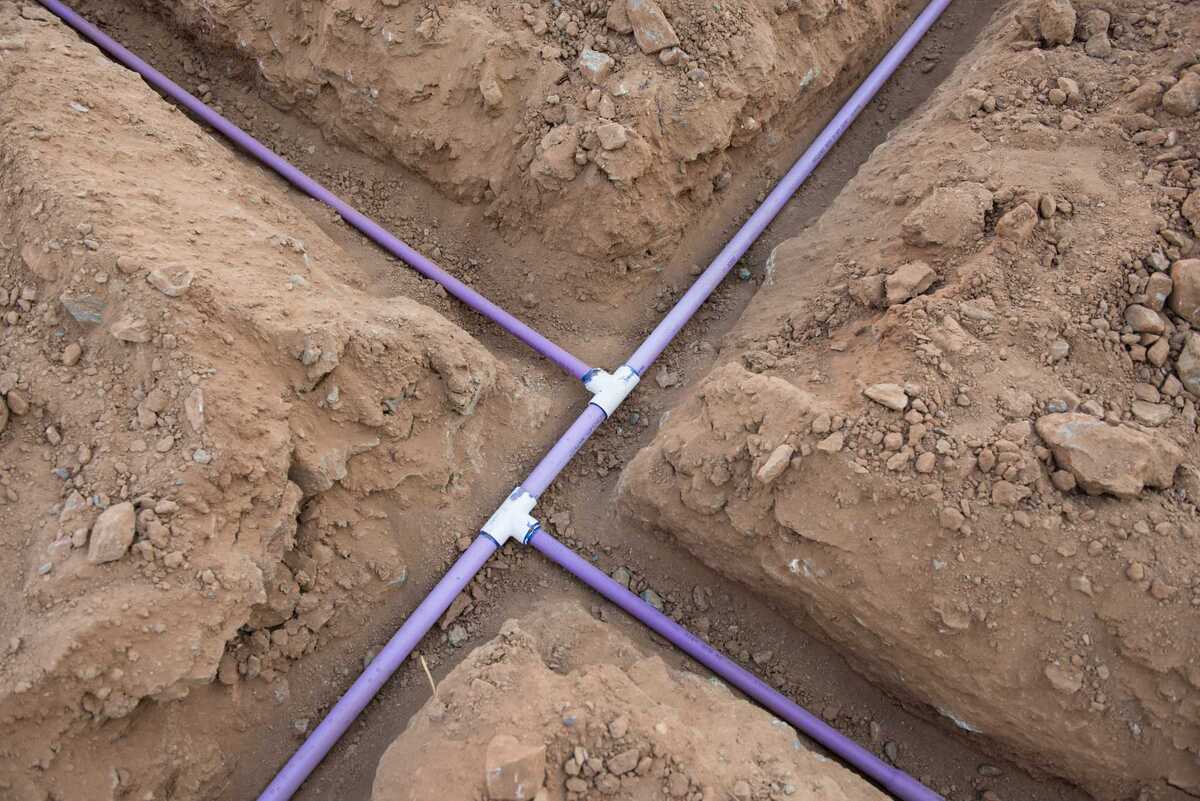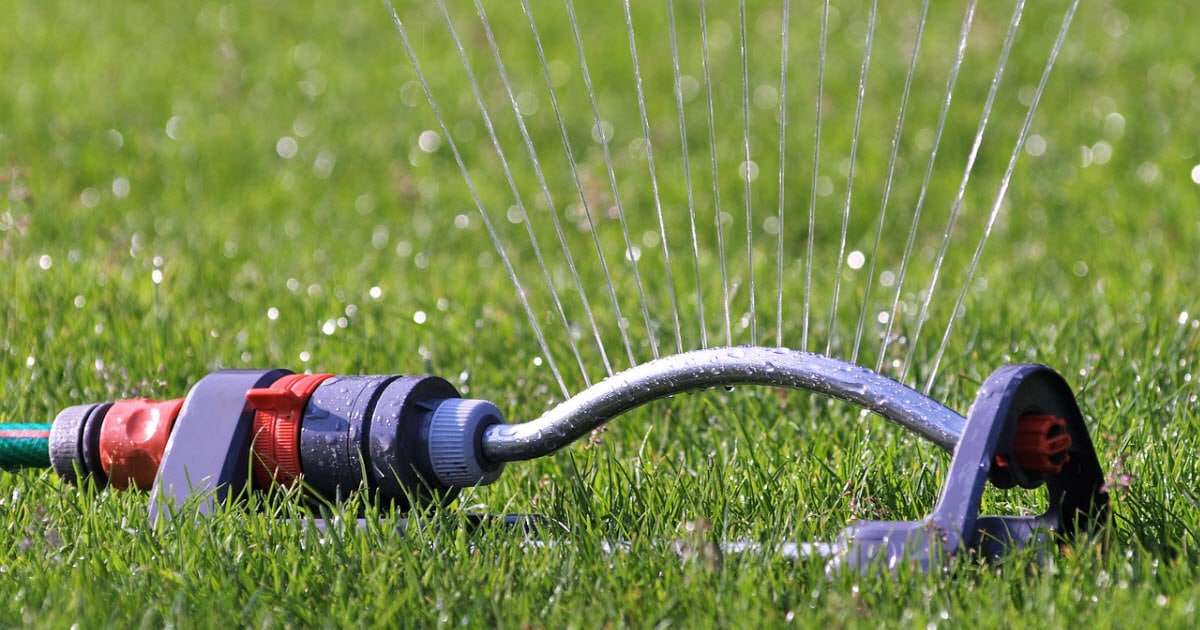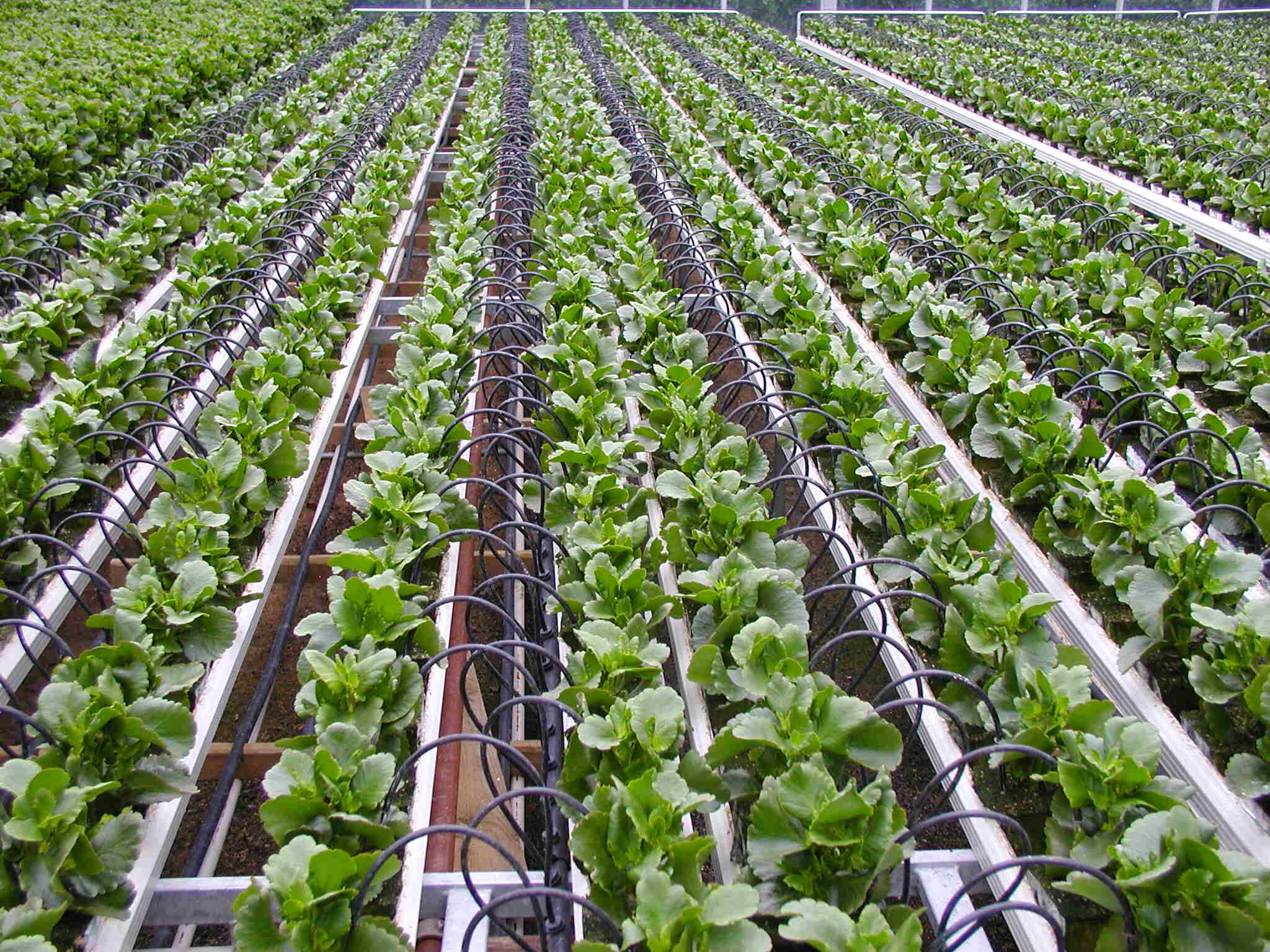Home>Gardening Basics>Tools and Equipment>How Deep Should Irrigation Lines Be


Tools and Equipment
How Deep Should Irrigation Lines Be
Published: November 17, 2023
Discover the essential tools and equipment needed for deep irrigation lines. Improve your irrigation system efficiency with the right tools.
(Many of the links in this article redirect to a specific reviewed product. Your purchase of these products through affiliate links helps to generate commission for Chicagolandgardening.com, at no extra cost. Learn more)
Table of Contents
Introduction
Welcome to the world of deep irrigation! If you’re a gardening enthusiast or a farmer, you’re probably aware of the importance of efficient irrigation systems. In recent years, deep irrigation has emerged as an innovative solution that can significantly improve water distribution and plant growth. Whether you’re tending to a small backyard garden or managing a vast agricultural field, deep irrigation lines can greatly enhance your irrigation efforts.
So, what exactly is deep irrigation? Unlike traditional surface irrigation methods where water is supplied near the soil surface, deep irrigation involves delivering water directly to the root zone of plants, ensuring optimal hydration and nutrient absorption. Deep irrigation lines are designed to penetrate the soil and deliver water to the root zone, providing numerous benefits for plant health and increasing overall water efficiency.
In this article, we will delve deeper into the topic of deep irrigation lines and explore their advantages, components, installation process, and maintenance. By the end, you will have a comprehensive understanding of how deep irrigation lines can revolutionize your irrigation practices and help you achieve healthier, more abundant crops.
Let’s dive in!
What is Deep Irrigation?
Deep irrigation is an irrigation technique that focuses on delivering water directly to the root zone of plants, promoting optimal plant growth and water efficiency. Unlike traditional surface irrigation methods, which can result in water loss due to evaporation and runoff, deep irrigation ensures that water is efficiently absorbed by the plant’s root system.
Deep irrigation involves the use of specially designed irrigation lines that penetrate the soil to reach the desired depth. These lines are typically made of durable materials such as PVC or polyethylene, which are resistant to corrosion and can withstand the rigors of being buried in the soil.
The key principle behind deep irrigation is to provide water directly to the root zone where it is most needed. By doing so, plants are able to absorb water and nutrients more efficiently, resulting in healthier and more robust growth. Additionally, deep irrigation helps to minimize water wastage, making it an environmentally friendly choice for irrigation practices.
One of the main advantages of deep irrigation is its ability to ensure uniform water distribution throughout the root zone. As the water is delivered at a specific depth, it reaches the plant’s entire root system, including the deeper roots that are often neglected by surface irrigation methods. This promotes a stronger and more extensive root system, which in turn leads to improved nutrient absorption and overall plant health.
Moreover, deep irrigation can help combat various challenges associated with traditional irrigation methods. For instance, in areas with high evaporation rates or sandy soils that are prone to leaching, deep irrigation allows for efficient water delivery directly to the plant’s roots, minimizing water loss and maximizing water usage.
Overall, deep irrigation offers a more precise and efficient approach to irrigation, ensuring that plants receive the necessary water and nutrients for healthy growth. By implementing deep irrigation techniques, gardeners and farmers can optimize water usage, conserve resources, and achieve better yields.
Benefits of Deep Irrigation
Deep irrigation offers a range of benefits that make it a preferred choice for gardeners and farmers. Let’s explore some of the key advantages of using deep irrigation lines:
- Improved Water Efficiency: Deep irrigation ensures that water is delivered directly to the root zone, minimizing evaporation and runoff. This targeted approach maximizes water efficiency, allowing plants to absorb water more effectively and reducing water wastage.
- Enhanced Plant Growth: By delivering water directly to the root system, deep irrigation promotes healthy plant growth. The consistent moisture supply ensures that plants receive the necessary hydration, enabling them to thrive and produce higher yields.
- Uniform Water Distribution: Deep irrigation lines distribute water evenly throughout the root zone, ensuring that all plants receive an adequate water supply. This promotes uniform growth and prevents areas of drought or overhydration, leading to a healthier and more visually appealing garden or field.
- Minimized Weed Growth: Deep irrigation targets the root zone of plants, minimizing water availability to weed seeds. This helps to suppress weed growth and reduces the need for manual weeding or herbicides, making maintenance easier and more cost-effective.
- Reduced Soil Erosion: Traditional surface irrigation can lead to soil erosion, especially on sloping terrain. Deep irrigation prevents excessive runoff, allowing water to penetrate and be retained in the soil. This helps to reduce erosion and maintain the quality and structure of the soil.
- Conservation of Resources: Deep irrigation contributes to sustainable water management by conserving resources. By reducing water wastage and optimizing irrigation practices, deep irrigation lines help to preserve water supplies and protect the environment.
- Flexibility in Planting: Deep irrigation lines can be installed to accommodate different plant layouts and densities. Whether you have rows of crops, beds of vegetables, or a diverse garden, deep irrigation systems can be customized to meet your specific needs.
- Long-Term Cost Savings: While the initial investment in deep irrigation lines may be higher compared to traditional irrigation methods, the long-term benefits make it a cost-effective solution. By conserving water, reducing plant stress, and promoting healthy growth, deep irrigation can lead to higher crop yields and ultimately, better returns on investment.
These benefits highlight the advantages of incorporating deep irrigation lines into your irrigation practices. From enhanced water efficiency to improved plant growth, deep irrigation can help you achieve healthier, more productive plants while minimizing environmental impact.
Components of Deep Irrigation Lines
Deep irrigation lines consist of several key components that work together to deliver water to the root zone effectively. Understanding these components is essential for designing and installing a reliable deep irrigation system. Here are the main components of deep irrigation lines:
- Irrigation Pipes: The irrigation pipes form the backbone of the deep irrigation system. They are typically made of durable materials such as PVC (polyvinyl chloride) or polyethylene. These pipes are designed to withstand the pressure of water and can be buried underground or placed on the soil surface, depending on the specific installation requirements.
- Emitters/Drippers: Emitters or drippers are devices that are attached to the irrigation pipes at regular intervals. These components control the flow of water and evenly distribute it along the irrigation lines. Emitters can be pressure-compensating, ensuring that each plant receives the same amount of water regardless of the location along the line.
- Filters: Filters play a crucial role in preventing clogging of the emitters. They remove impurities, such as sediment and debris, from the water, ensuring that only clean water reaches the plants. Filters are typically placed at the water source, such as a well or a reservoir, before the water enters the irrigation system.
- Pressure Regulators: Pressure regulators help maintain a consistent water pressure throughout the irrigation lines. They ensure that the irrigation system operates at the optimum pressure range for efficient water distribution. Pressure regulators are especially important when using a water source with varying pressure levels.
- Valves: Valves are used to control the flow of water in the irrigation system. They allow you to turn the water supply on or off, as well as adjust the amount of water flowing through the system. Valves can be manually operated or automated, depending on the desired level of control.
- Backflow Preventers: Backflow preventers are essential safety devices that protect the water supply from contamination. They prevent water from flowing back into the main water source, ensuring that only clean water enters the irrigation system. Backflow preventers are typically required by local regulations and should be installed by a licensed professional.
- Controllers: Controllers are electronic devices that allow you to automate and control the irrigation system. They provide scheduling flexibility, allowing you to set specific watering times and durations. Controllers can also be connected to weather sensors, enabling the system to adjust watering based on real-time weather conditions.
- Monitoring and Control System: Some advanced deep irrigation systems may include monitoring and control systems that provide real-time data on soil moisture levels, water usage, and system performance. These systems allow for remote monitoring and control, ensuring efficient water management and identifying any potential issues quickly.
These components work together to create a reliable and effective deep irrigation system. When planning your deep irrigation project, it’s essential to consider these components, their compatibility, and the specific requirements of your plants and landscape.
Installation Process of Deep Irrigation Lines
The installation process of deep irrigation lines involves several steps to ensure the proper functioning of the system. While it’s recommended to hire a professional for complex installations, here’s a general overview of the process:
- Design the System: Before installing deep irrigation lines, it’s crucial to design the system layout. Consider factors such as plant spacing, water requirements, and soil type to determine the optimal placement and configuration of the lines. Ensure that the system will provide adequate water coverage to all plants.
- Prepare the Area: Clear the area where the deep irrigation lines will be installed. Remove any rocks, debris, or vegetation that may obstruct the installation process. Level the soil to ensure even water distribution and easy installation of the pipes.
- Dig Trenches: Dig trenches according to the planned layout of the deep irrigation lines. The depth of the trenches will depend on the specific requirements of your plants. Typically, the trenches should be deep enough to house the pipes while ensuring they are buried at the preferred depth to deliver water directly to the root zone.
- Lay the Pipes: Carefully place the irrigation pipes in the trenches, making sure they are positioned securely and at the desired depth. Connect the pipes using appropriate pipe fittings, ensuring a tight and leak-free connection. If necessary, cut the pipes to fit the layout and use connectors to join them.
- Install Emitters/Drippers: Attach the emitters or drippers to the irrigation pipes at regular intervals, following the spacing requirements determined during the design phase. Ensure that the emitters are securely attached and distribute water evenly along the lines. Consider using pressure-compensating emitters for consistent water distribution.
- Connect Filters and Valves: Install filters at the water source to remove impurities and prevent clogging of the emitters. Connect valves to control the flow of water through the system. Ensure that the filters and valves are installed according to the manufacturer’s instructions and in a location where they are easily accessible for maintenance.
- Test the System: Before covering the trenches, test the deep irrigation system to ensure it functions properly. Turn on the water supply and check for any leaks, uneven flow, or malfunctions. Adjust the system as needed to ensure optimal water distribution and coverage.
- Cover the Trenches: Once the system has been tested and verified, carefully backfill the trenches, ensuring that the pipes are protected and secured in the soil. Use soil or mulch to cover the trenches, providing insulation and minimizing water evaporation. Avoid compacting the soil too tightly to allow for proper root growth and water infiltration.
- Monitor and Adjust: After installation, regularly monitor the deep irrigation system to ensure its proper functioning. Adjust the watering schedule and flow rate as needed based on the specific water requirements of your plants and changing weather conditions. Periodically check the emitters and filters for any clogs or issues that may affect water distribution.
Remember, the installation process may vary depending on the specific requirements of your landscape and plants. Consulting with a professional and following the manufacturer’s instructions will ensure a successful installation of deep irrigation lines.
Maintenance and Troubleshooting of Deep Irrigation Lines
Proper maintenance and timely troubleshooting are essential to ensure the efficient operation of deep irrigation lines. Regular maintenance helps prolong the lifespan of the system, ensures optimal water distribution, and minimizes the chances of any issues. Here are some key maintenance tasks and troubleshooting tips for deep irrigation lines:
- Inspect the System: Regularly inspect the deep irrigation lines for any signs of damage or wear. Check for leaks, cracks, or clogs in the pipes, emitters, and connectors. Look out for any signs of pest or root intrusion that may affect the system’s functionality.
- Clean Filters: Clean the filters regularly to remove debris, sediment, and other impurities that may cause clogging. Follow the manufacturer’s guidelines on how frequently the filters should be cleaned or replaced. Clean filters ensure a steady flow of clean water to the emitters.
- Check Emitters: Regularly inspect the emitters or drippers to ensure they are functioning properly. Clean or replace clogged or damaged emitters. Ensure that the emitters are evenly distributed along the irrigation lines and delivering water uniformly to the plants.
- Monitor Water Pressure: Check the water pressure in the deep irrigation system regularly. Ensure that the pressure is within the recommended range for the specific emitters and plants. Adjust the pressure regulator as needed to maintain optimal water flow and distribution.
- Monitor and Adjust Watering Schedule: Monitor the water needs of your plants and adjust the watering schedule accordingly. Consider factors such as weather conditions, plant growth stages, and soil moisture levels. Avoid over-watering or under-watering your plants to maintain their health and prevent water wastage.
- Manage Soil Moisture: Regularly monitor the moisture levels in the soil. Use a soil moisture sensor or simply check the soil by hand at different depths. Adjust the irrigation schedule to ensure that the soil remains adequately moist but not waterlogged.
- Perform Seasonal Maintenance: Before each season, perform routine maintenance tasks such as checking and adjusting the system components, clearing any debris from the irrigation lines, and ensuring proper insulation of the pipes in colder climates.
- Troubleshooting: If you encounter any issues with the deep irrigation system, such as low water flow, uneven water distribution, or leaks, troubleshoot the problem systematically. Check for clogged emitters, damaged pipes, or faulty valves. Refer to the manufacturer’s guidelines or consult a professional if necessary.
- Professional Inspection: Consider scheduling periodic inspections by a professional to ensure the proper functioning of the deep irrigation system. They can identify any potential issues, provide maintenance recommendations, and make adjustments to optimize performance.
By following a regular maintenance routine and promptly addressing any issues, you can ensure the longevity and reliability of your deep irrigation system. Regular monitoring and adjustments will help you achieve efficient water distribution, healthier plants, and a thriving garden or field.
Conclusion
Deep irrigation lines offer a valuable solution for efficient and targeted water distribution in gardening and farming practices. By delivering water directly to the root zone of plants, deep irrigation promotes healthier growth, minimizes water wastage, and enhances overall water efficiency.
Throughout this article, we explored the concept of deep irrigation and its advantages. We discussed how deep irrigation lines work by delivering water directly to the plant’s roots, ensuring uniform water distribution and improved nutrient absorption. We also highlighted the various benefits of deep irrigation, including enhanced water efficiency, uniform plant growth, reduced weed growth, and conservation of resources.
Understanding the components and installation process of deep irrigation lines is crucial for designing and implementing an effective system. We covered the main components of deep irrigation lines, such as pipes, emitters, filters, and valves, and outlined the steps involved in the installation process.
However, it’s important to note that proper maintenance and troubleshooting are essential for the longevity and optimal performance of deep irrigation systems. Regular inspection, cleaning of filters and emitters, monitoring of water pressure and soil moisture levels, and prompt troubleshooting of any issues are key maintenance tasks that ensure the system’s efficiency.
In conclusion, deep irrigation lines provide a reliable and efficient solution for delivering water directly to the roots of plants. By implementing deep irrigation systems and consistently maintaining them, gardeners and farmers can achieve healthier plants, conserve water resources, and optimize yields. Embracing deep irrigation technology can revolutionize your irrigation practices and contribute to a sustainable and thriving garden or farm.




